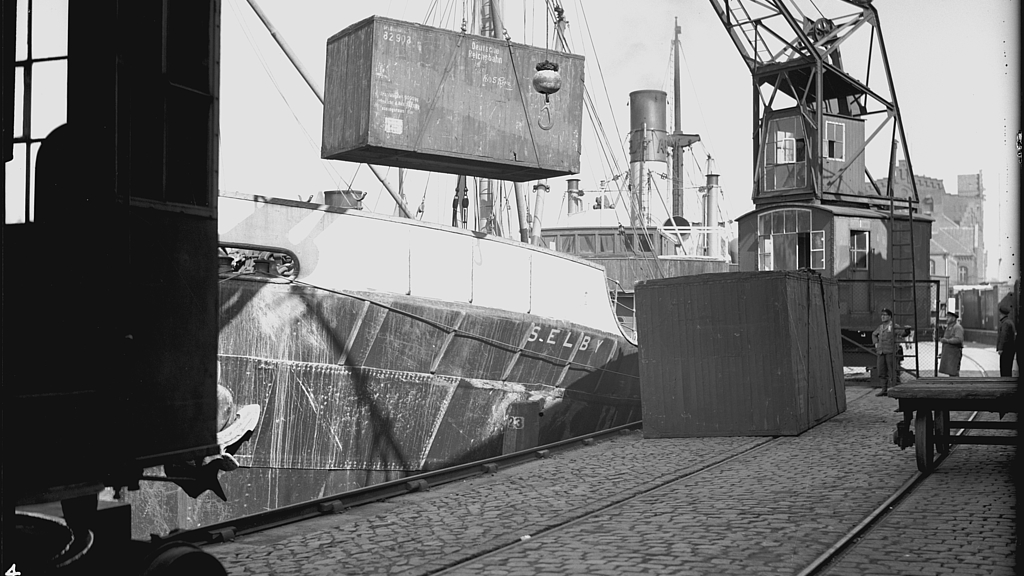German Maritime Museum launches database for looted Jewish property
The Provenance Research team of the German Maritime Museum (DSM) / Leibniz Institute for Maritime History launches the first database that can be used to search for removal goods of Jewish refugees expropriated during National Socialism. The official launch date for the LostLift database is September 1 - the day World War II began in 1939.
Eva Evans was 14 years old when her parents took paintings off the walls of their large Berlin apartment, carefully packed candlesticks and stowed all household goods in boxes to be shipped to Great Britain. For the Jewish family, life under the Nazis became increasingly dangerous. Arriving in the country that was to become the new home of the now 99 year old lady, the family waited in vain for the removal goods. They were supposed to reach Great Britain by ship. But of many so-called lift vans - as the moving containers were called - only the hand luggage arrived. All the other crates were auctioned off, Evans learned just a few weeks ago. More than half a century later, the British woman who wrote a book about her life as a refugee is helping to pick up the trail of the missing removal goods.
"Mrs. Evans is the first contemporary witness to come forward as a result of our research. Otherwise, it's the descendants who do it," says Dr. Kathrin Kleibl. As provenance researcher she traces the origins and whereabouts of spoliated and auctioned removal goods. Eva Evans vividly recalled how the customs officer came to the apartment at that time and meticulously went through the lists. "I sent her the auction record found in the archives, after which she was able to help me identify some of the items. That was very touching, because on the one hand she can work through a piece of family history, and on the other hand provenance research gets important clues this way," says Kleibl.
Since 2018, two research projects at the DSM funded by the German Lost Art Foundation have been investigating the processes of dispossession of Jewish people in the ports of Bremen and Hamburg. Dr. Kathrin Kleibl and Susanne Kiel are sifting through thousands of documents from the state archives in Hamburg and Bremen in detective-like detail. Over the past few years, they have entered information on auctioned furniture, musical instruments, paintings and the like into the LostLift database - the first and only database of its kind to date. There are already 5,500 entries in the register of persons. Another 3,200 or so concrete cases of robbery have been added. Each entry reconstructs the path of a family's belongings, in accordance with the written records - from leaving the home with a forwarding agent to the confiscation in a port city and finally the auctioning of the possessions. The files of the compensation procedures requested by the families in the post-war period complete the picture. In addition, information on the individual parties involved - aggrieved families themselves, shipping companies, courts or buyers of the items - is now searchable online at the click of a button.
"With the database, we want to draw attention to this aspect of the robbery of Jews under National Socialism, which has been little dealt with so far, and encourage people - especially in Bremen and Hamburg - to provide us with further information. Are there possibly heirlooms that do not clearly come from the family, but were bought during the war?" asks Kleibl. The provenance researchers know about the perfidious infrastructure under the National Socialists: almost all citizens, small shipping companies and dealers were involved in the auctions.
The researchers' work is a starting signal and could trigger a wave. The team is at the beginning, because the German-English database is growing by the minute, so to speak, with each entry. Looking at the course of history, however, the reappraisal comes 75 years too late. "What we are doing should have been done much earlier. But in the founding phase of the Federal Republic of Germany, people kept silent in order to avoid possible reparation payments and to avoid being confronted with the guilt any longer.We are, if you will, following in the footsteps of the former State Offices for Reparations, only we go even further in our research: we make it visible that people who fled abroad were also victims of National Socialist Germany," says Kiel.

supportet by Deutschen Zentrum Kulturgutverluste

Loading a lift van onto a ship in the Port of Hamburg. Speicherstadtmuseum Hamburg (Gustav Werbeck/HHLA Photo Archive)

